David Estevez
Real Evaluations Tractability using Continuous Goal-Directed Actions in Smart City Applications
Feb 01, 2024Abstract:One of the most important challenges of Smart City Applications is to adapt the system to interact with non-expert users. Robot imitation frameworks aim to simplify and reduce times of robot programming by allowing users to program directly through demonstrations. In classical frameworks, actions are modeled using joint or Cartesian space trajectories. Other features, such as visual ones, are not always well represented with these pure geometrical approaches. Continuous Goal-Directed Actions (CGDA) is an alternative to these methods, as it encodes actions as changes of any feature that can be extracted from the environment. As a consequence of this, the robot joint trajectories for execution must be fully computed to comply with this feature-agnostic encoding. This is achieved using Evolutionary Algorithms (EA), which usually requires too many evaluations to perform this evolution step in the actual robot. Current strategies involve performing evaluations in a simulation, transferring the final joint trajectory to the actual robot. Smart City applications involve working in highly dynamic and complex environments, where having a precise model is not always achievable. Our goal is to study the tractability of performing these evaluations directly in a real-world scenario. Two different approaches to reduce the number of evaluations using EA, are proposed and compared. In the first approach, Particle Swarm Optimization (PSO)-based methods have been studied and compared within CGDA: naive PSO, Fitness Inheritance PSO (FI-PSO), and Adaptive Fuzzy Fitness Granulation with PSO (AFFG-PSO). The second approach studied the introduction of geometrical and velocity constraints within CGDA. The effects of both approaches were analyzed and compared in the wax and paint actions, two CGDA commonly studied use cases. Results from this paper depict an important reduction in the number of evaluations.
Neural Policy Style Transfer
Feb 01, 2024



Abstract:Style Transfer has been proposed in a number of fields: fine arts, natural language processing, and fixed trajectories. We scale this concept up to control policies within a Deep Reinforcement Learning infrastructure. Each network is trained to maximize the expected reward, which typically encodes the goal of an action, and can be described as the content. The expressive power of deep neural networks enables encoding a secondary task, which can be described as the style. The Neural Policy Style Transfer (NPST) algorithm is proposed to transfer the style of one policy to another, while maintaining the content of the latter. Different policies are defined via Deep Q-Network architectures. These models are trained using demonstrations through Inverse Reinforcement Learning. Two different sets of user demonstrations are performed, one for content and other for style. Different styles are encoded as defined by user demonstrations. The generated policy is the result of feeding a content policy and a style policy to the NPST algorithm. Experiments are performed in a catch-ball game inspired by the Deep Reinforcement Learning classical Atari games; and a real-world painting scenario with a full-sized humanoid robot, based on previous works of the authors. The implementation of three different Q-Network architectures (Shallow, Deep and Deep Recurrent Q-Network) to encode the policies within the NPST framework is proposed and the results obtained in the experiments with each of these architectures compared.
Quick, Stat!: A Statistical Analysis of the Quick, Draw! Dataset
Jul 15, 2019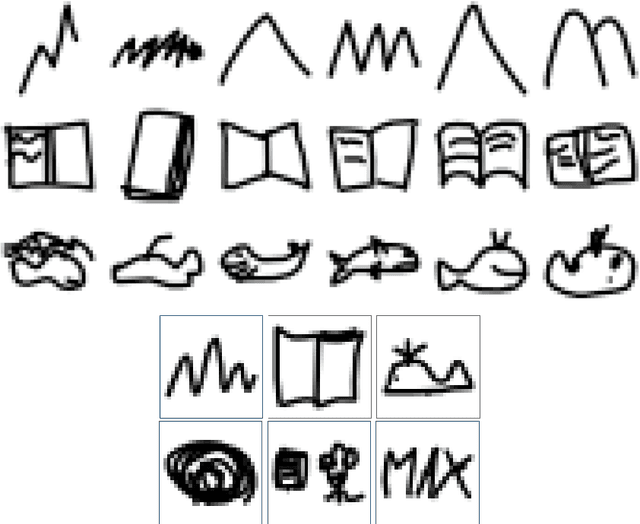

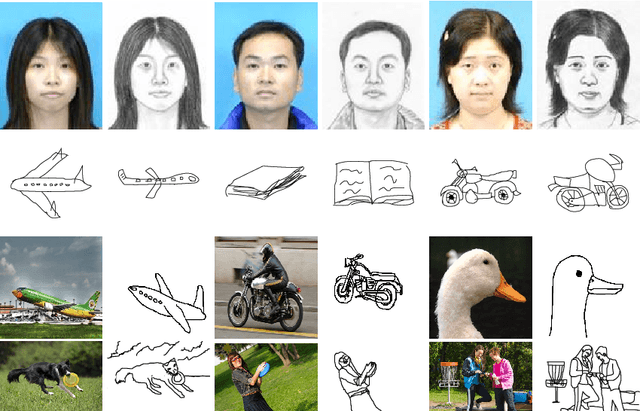

Abstract:The Quick, Draw! Dataset is a Google dataset with a collection of 50 million drawings, divided in 345 categories, collected from the users of the game Quick, Draw!. In contrast with most of the existing image datasets, in the Quick, Draw! Dataset, drawings are stored as time series of pencil positions instead of a bitmap matrix composed by pixels. This aspect makes this dataset the largest doodle dataset available at the time. The Quick, Draw! Dataset is presented as a great opportunity to researchers for developing and studying machine learning techniques. Due to the size of this dataset and the nature of its source, there is a scarce of information about the quality of the drawings contained. In this paper, a statistical analysis of three of the classes contained in the Quick, Draw! Dataset is depicted: mountain, book and whale. The goal is to give to the reader a first impression of the data collected in this dataset. For the analysis of the quality of the drawings, a Classification Neural Network was trained to obtain a classification score. Using this classification score and the parameters provided by the dataset, a statistical analysis of the quality and nature of the drawings contained in this dataset is provided.
Robot Imitation through Vision, Kinesthetic and Force Features with Online Adaptation to Changing Environments
Oct 30, 2018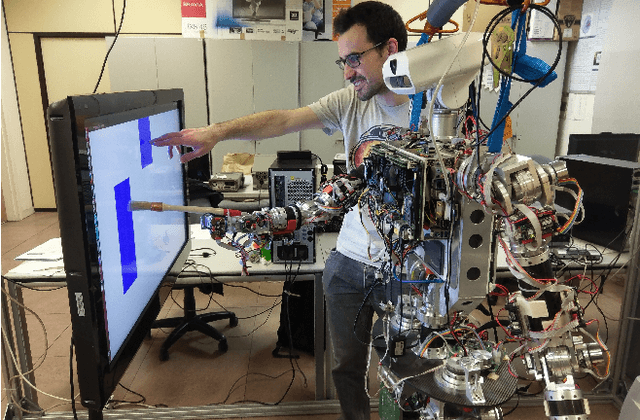
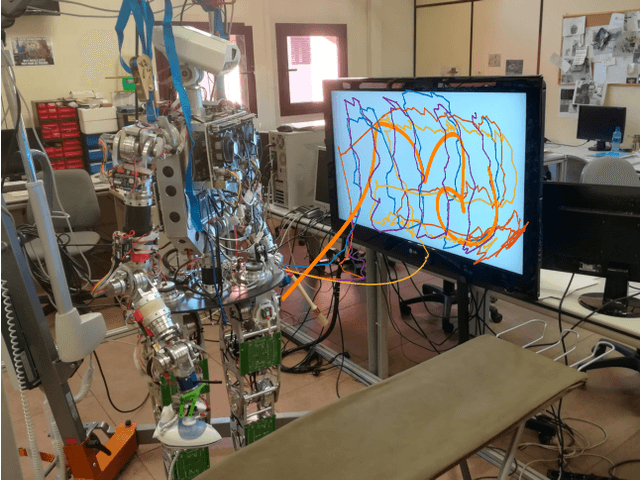
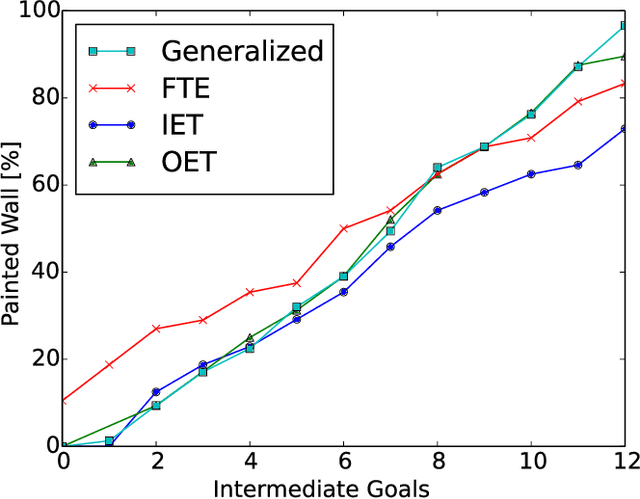
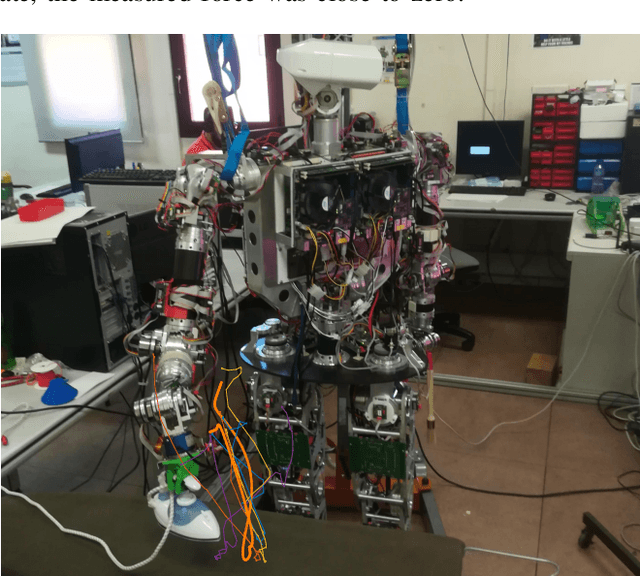
Abstract:Continuous Goal-Directed Actions (CGDA) is a robot imitation framework that encodes actions as the changes they produce on the environment. While it presents numerous advantages with respect to other robot imitation frameworks in terms of generalization and portability, final robot joint trajectories for the execution of actions are not necessarily encoded within the model. This is studied as an optimization problem, and the solution is computed through evolutionary algorithms in simulated environments. Evolutionary algorithms require a large number of evaluations, which had made the use of these algorithms in real world applications very challenging. This paper presents online evolutionary strategies, as a change of paradigm within CGDA execution. Online evolutionary strategies shift and merge motor execution into the planning loop. A concrete online evolutionary strategy, Online Evolved Trajectories (OET), is presented. OET drastically reduces computational times between motor executions, and enables working in real world dynamic environments and/or with human collaboration. Its performance has been measured against Full Trajectory Evolution (FTE) and Incrementally Evolved Trajectories (IET), obtaining the best overall results. Experimental evaluations are performed on the TEO full-sized humanoid robot with "paint" and "iron" actions that together involve vision, kinesthetic and force features.
Robotic Ironing with 3D Perception and Force/Torque Feedback in Household Environments
Jun 16, 2017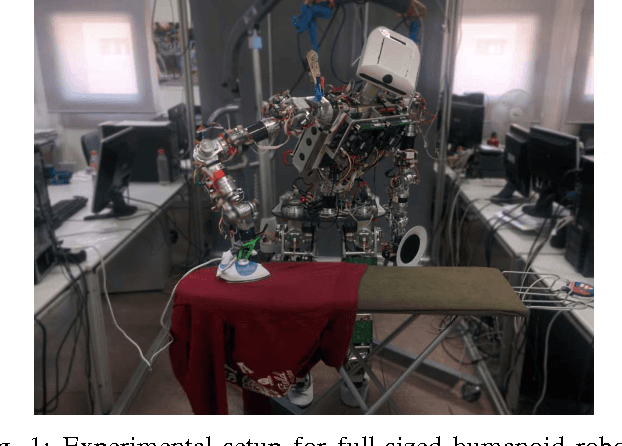
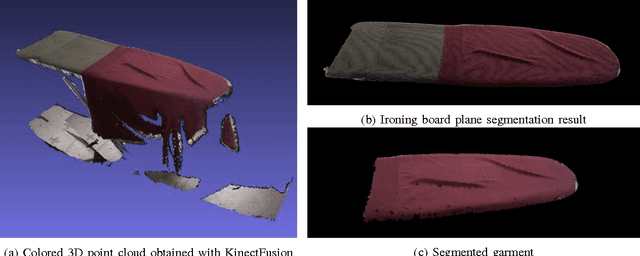
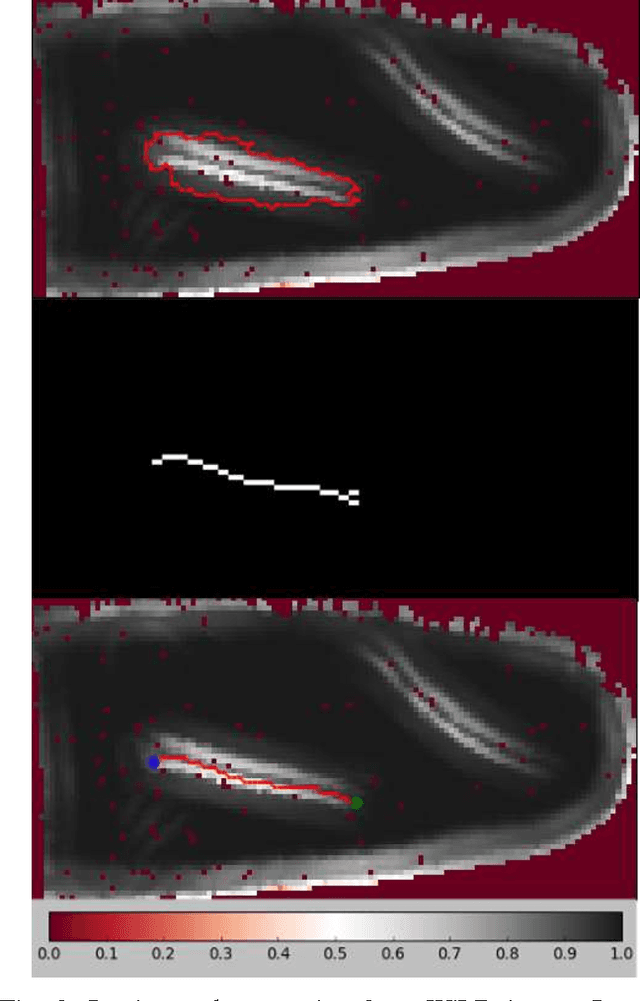
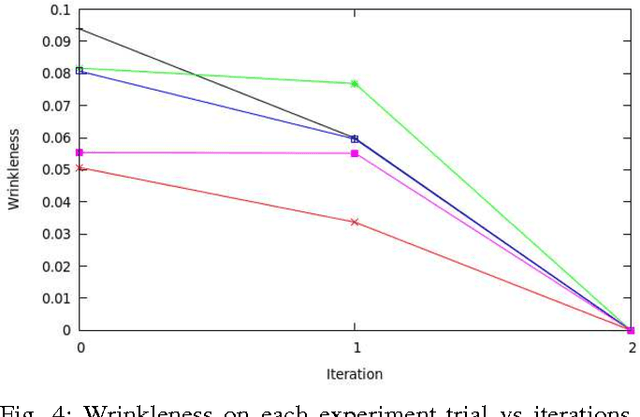
Abstract:As robotic systems become more popular in household environments, the complexity of required tasks also increases. In this work we focus on a domestic chore deemed dull by a majority of the population, the task of ironing. The presented algorithm improves on the limited number of previous works by joining 3D perception with force/torque sensing, with emphasis on finding a practical solution with a feasible implementation in a domestic setting. Our algorithm obtains a point cloud representation of the working environment. From this point cloud, the garment is segmented and a custom Wrinkleness Local Descriptor (WiLD) is computed to determine the location of the present wrinkles. Using this descriptor, the most suitable ironing path is computed and, based on it, the manipulation algorithm performs the force-controlled ironing operation. Experiments have been performed with a humanoid robot platform, proving that our algorithm is able to detect successfully wrinkles present in garments and iteratively reduce the wrinkleness using an unmodified iron.
 Add to Chrome
Add to Chrome Add to Firefox
Add to Firefox Add to Edge
Add to Edge